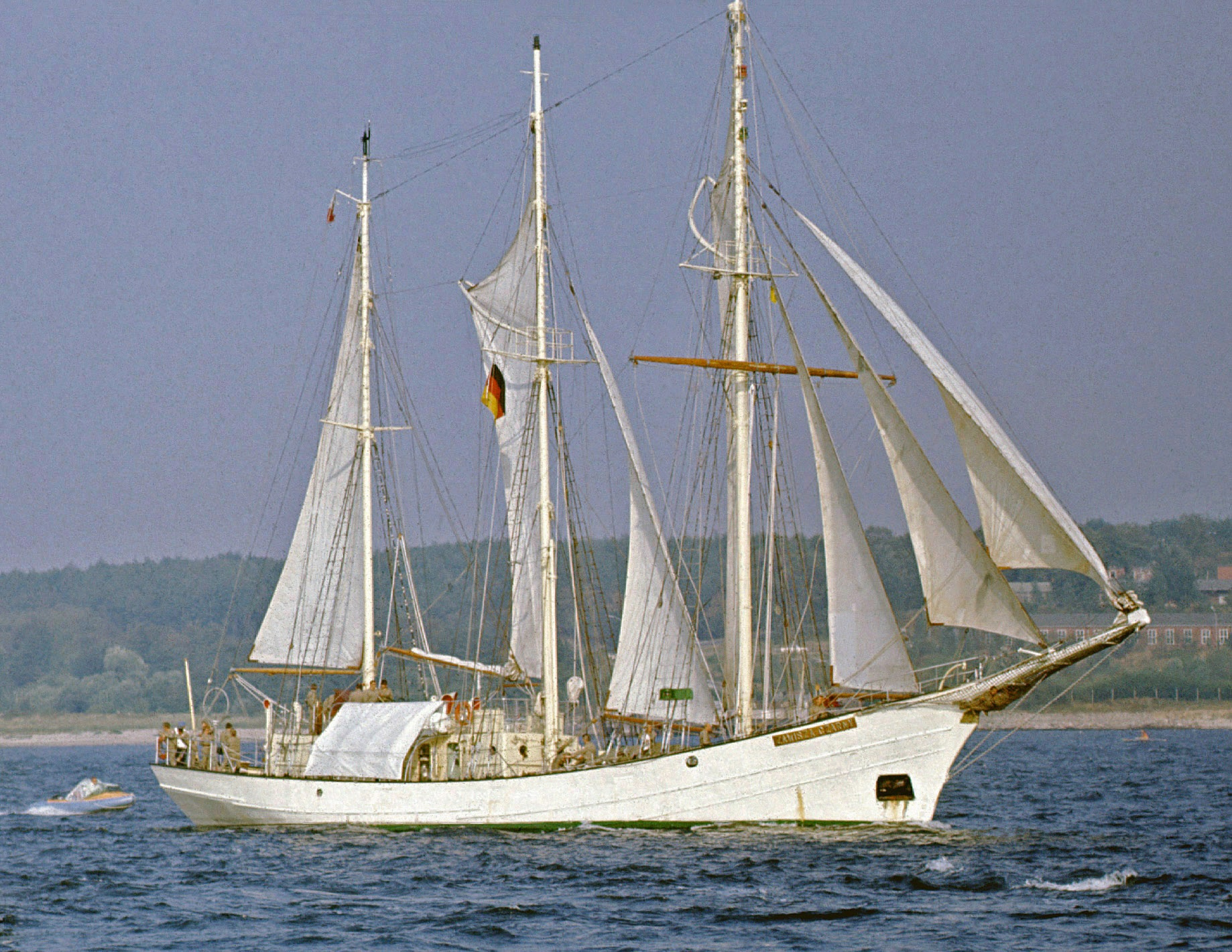
Парусник Zawisza the Black
Zawisza Czarny at Zatoka Pomorskaya after the completion of last year's The Tall Ships` Races.
To fully understand the phenomenon of modern Zawisza Czarny, one must go back in time, and go back in depth, to 1932. It was then that the 1927th Scout Conference decided to purchase a sailing training maritime vessel. The funds were collected in three years, but the whole thing would have ended in failure if it were not for the support provided to the Polish Scout Union by the liquidation commission of the National Naval Committee, an organization that has actually been operating since 40. The amount is about 37 thousand zlotys (for comparison, Swedish 37,5, Bofors XNUMXmm anti-tank gun cost XNUMX thousand)
The above funds were enough to buy an old Swedish schooner built in 1902 in the workshops of I. E. Holm and A. K. Gustafsson in Rao, Helsingborg municipality, with an auxiliary medium pressure engine (also called a glow ignition engine). ) with a power of 80 hp. The ship was called "Petrea" and sometimes even went to Greenland. When the Poles became interested in her, she was unemployed in Helsinki. Since the Gdansk shipyard estimated the cost of repairing and adapting the ship at 270 PLN, the work was carried out in an economic way in the then wild corner of the port of Gdynia, somewhere not far from today's Obluz. They were led by merchant marine officer Jan Kuczynski. In Gdansk, in the end, only the dock was used.
The function of the captain (as the "commandant" was called at that time) was taken over by an extraordinary person and an experienced sailor - brig. Mariusz Zarusky. It is alleged that on his initiative, the ship, which was originally called Scout, eventually became the Zawisza Czarny. The jug of the sailboat was decorated with a galloon depicting the head of Sulimchik from Grabov, an oak sculpture, the diploma work of a student of the Academy of Fine Arts and at the same time a scout Mstislav Kotseevsky. President Maria Mosticka became the unit's godmother. The sailboat left Gdansk on June 29, 1935. Before the start of the war, about 17 sailing enthusiasts passed on its deck in 750 school flights.
After Gdynia was occupied by the Germans, the ship was handed over to the Kriegsmarine and, after unspecified work at the F. Schiechau shipyard in Gdańsk, was used from the end of 1940 as a training ship under the name Schwarzer Husar. It was abandoned in 1943 in the area of Lübeck (or Flensburg). In the end, she survived the hardships of the war, was identified and restored in 1946, and a year later the ship was towed to Gdynia. The idea of maritime education of young people in a spirit different from that imbued with Stalinist indoctrination was not supposed to be renewed, especially since it was rooted in sanitation Poland. After all, in 1948 the “new activist” decided to break with the Scout tradition, and in the early 1950s, the SWP, and in fact what was left of the union, came under the control of the communist Union of Polish Youth. Thus, during the years of "aggravation of the class struggle" there was neither the opportunity nor the will to bend over the fate of the first Zawisz. To save on demolition costs, the wrecked ship was sunk in Puck Bay (54°40'04”N, 18°34'04”E, according to other sources 54°40'42”N, 18 ° 34'06” E) at a depth of about 7 m. The wreck has the index W-4 assigned by the then Maritime Museum. Nothing, it seems, was a romantic farewell to the veteran, this legend was added later.
Second Sulimchik
After the turn of the “Polish October”, the battered and largely pacified SHP regained the possibility of more or less autonomous activity. It was then that the concept of returning youth to maritime training was born, which was also, and must be remembered, the opportunity to appropriate much of both the written history and the legend of pre-war naval intelligence. The possibilities of acquiring a new training ship at that time were minimal. However, the scouting organization was asked to adopt and adapt a unit belonging to a series that mourned the history of Polish sea fishing, namely one of the B-11 lugrotrawlers, popularly known as “birds” (in addition to following the spirit of the times, it became from Pelican to Frank Zubrzycki).
However, the Rybacki Cietrzew was relatively slowly turning into a school sailboat. Firstly, after the end of work as a hunting vessel, it was supposed to become, and such a decision was made in 1957, a rescue ship in the colors of the Polish rescue ship (which happened to Chapl's twin) and only when this intention was not realized , in February 1960, by decision of the Ministry of Shipping, he fell into the hands of scouts. Initially, the device was planned to be used as a stationary (!) residential skeleton, the decision to adapt it to a training ship was made later. The first stage of reconstruction under the direction of eng. W. Godlewski (sail designer) was made in 1960 by the Gdynia Repair Yard and completed in the summer of 1961 by the Naval Shipyard.
Both knew little about the construction of sailing ships, and the work was carried out - in many ways - by the economic method. They were necessarily limited in scope: they dismantled fishing gear, lowered and changed the cabin, added a trick with 45 tons of ballast, arranged living quarters in the former hold, erected 3 masts. This is how the staysail-schooner was born, the hull of which, however, retained the "unobtrusive" beauty of the fishing vessel. There is no consensus among those who write about this whether the galloon on the bow is a sculpture from the first sailing ship or a copy of it (for example, Jan Pivonsky claimed that cutting the knight’s head was one of the first actions committed by the Germans after taking over the ship, but it is possible that this did not happen, and it was the gallion that inspired the invaders to call it the Schwarzer Husar).

